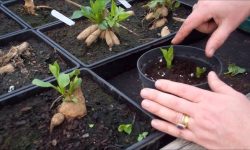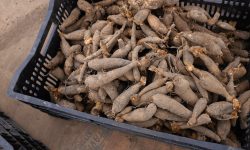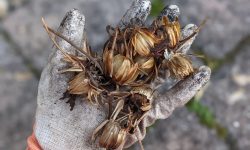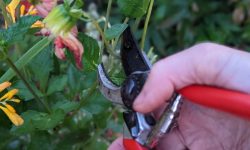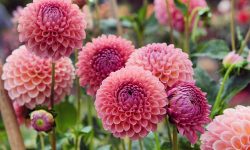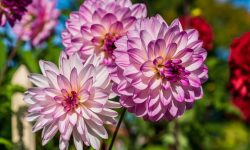Few things brighten a home quite like the vibrant colors and sweet scent of blooming hyacinths. Their lush clusters of flowers bring joy to any room or garden corner. But for cat lovers, beauty sometimes comes with risk. Behind those fragrant petals lies a hidden danger—one that could threaten the health of your beloved feline companion.
As curious as they are agile, cats often explore their surroundings with paws and mouths. If a cat nibbles on a hyacinth bulb or leaf, it may be exposed to toxic compounds that can cause anything from mild drooling to serious digestive upset. Understanding the risks and learning how to protect your pet doesn’t mean giving up flowers—it means creating a safe, blooming space for both plants and purring friends.
Understanding Hyacinths and Their Toxic Compounds
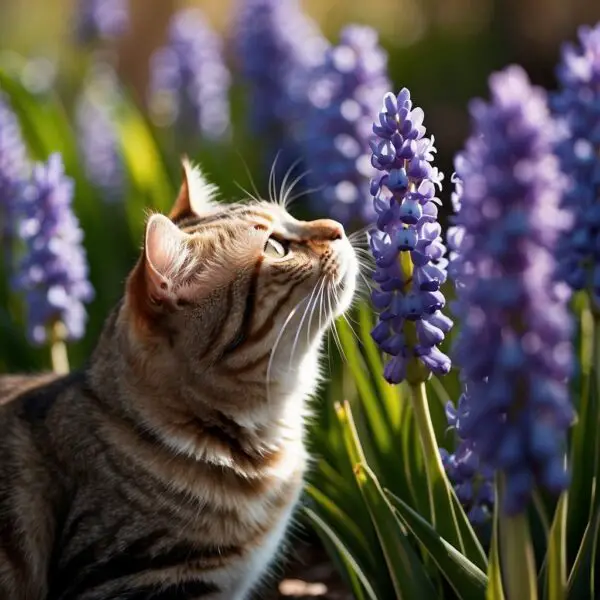
Hyacinths, known for their vivid blooms and sweet fragrance, belong to the Hyacinthus genus. While they brighten up gardens and homes, they contain natural toxins that can be harmful to cats.
The main toxic agents in hyacinths are calcium oxalate crystals, especially concentrated in the bulbs. These tiny, sharp crystals can irritate a cat’s mouth, throat, and stomach when chewed or swallowed, causing pain, drooling, vomiting, or more severe digestive distress. Even small amounts can trigger reactions, especially in sensitive or smaller cats.
In addition to calcium oxalates, hyacinths contain mild alkaloids that may impact the nervous and digestive systems. Though the bulbs are the most dangerous part, leaves and flowers can also cause irritation.
Because cats are naturally curious and may nibble on plants out of boredom or instinct, even indoor hyacinths pose a risk. Whether in bloom, dormant, or freshly potted, hyacinths remain toxic at every stage—making awareness and prevention key to keeping your feline safe.
Why Hyacinths Are Toxic to Cats
Hyacinths are toxic to cats primarily because of the specific chemical compounds they contain—substances that are harmless to humans but highly irritating and potentially dangerous to felines. The most problematic of these is calcium oxalate, found in microscopic needle-like crystals that are concentrated in the bulb but also present in the leaves and flowers. When a cat chews on any part of the plant, these crystals can embed in the soft tissues of the mouth, gums, tongue, and throat, causing intense pain and inflammation.
In addition to calcium oxalates, hyacinths also contain alkaloids—naturally occurring chemicals that can interfere with a cat’s digestive and nervous systems. These alkaloids can cause nausea, vomiting, and even tremors or changes in heart rate in more severe cases. While not typically fatal, ingestion can lead to significant discomfort and may require veterinary care, especially if the bulb was consumed in large quantities.
Cats are particularly sensitive to plant toxins because their bodies lack certain liver enzymes that help detoxify substances. This makes them more vulnerable than dogs or humans to even small doses of toxic plant matter. Even indirect contact—such as licking paws after stepping in hyacinth potting soil—can lead to mild symptoms.
Understanding the source of toxicity helps cat owners recognize the seriousness of exposure. Whether in outdoor flower beds or as part of an indoor spring display, hyacinths are best kept out of reach of curious paws to prevent accidental poisoning.
Symptoms of Hyacinth Poisoning in Cats
Recognizing the symptoms of hyacinth poisoning early can make a crucial difference in how quickly your cat recovers. Since cats often explore plants by chewing or pawing, even minor exposure to hyacinths can trigger noticeable physical reactions.
The most common early signs include excessive drooling, pawing at the mouth, and vomiting. These occur when calcium oxalate crystals irritate the tissues of the mouth, tongue, and throat. Affected cats may appear distressed, shake their heads, or refuse food and water due to oral pain.
If your cat swallows plant material, gastrointestinal symptoms typically follow within a few hours. These may include nausea, vomiting, diarrhea, abdominal pain, and loss of appetite. In cases of larger ingestion—especially of the bulb—more severe effects such as tremors, lethargy, or difficulty breathing can occur.
Other less common symptoms may include excessive licking, restlessness, or signs of dehydration due to repeated vomiting or diarrhea. If your cat has a history of allergies or is very young or old, the reaction may be stronger and faster.
Always watch your cat closely if you suspect contact with hyacinths. Any unusual behavior after potential exposure should prompt a call to your veterinarian or a pet poison hotline. Early treatment can prevent symptoms from escalating and ensure a full recovery.
Immediate Actions to Take if Ingestion Occurs
If you suspect or witness your cat chewing on or ingesting any part of a hyacinth—especially the bulb—quick action is critical. Even if symptoms haven’t appeared yet, the toxins can begin to irritate your cat’s mouth and digestive tract within minutes.
The first step is to remove any remaining plant material from your cat’s mouth and surroundings to prevent further exposure. Use a damp cloth to gently wipe their mouth if possible, but avoid forcing it open or causing distress. Be careful not to get scratched or bitten—cats in pain or fear may react defensively.
Next, observe your cat closely for early symptoms, such as drooling, pawing at the mouth, vomiting, or changes in behavior. Take note of how much of the plant was ingested, what part (especially if it was the bulb), and when it happened. This information will be crucial for your veterinarian.
Do not attempt to induce vomiting or administer home remedies unless specifically instructed by a professional. Some treatments can worsen the condition if not done correctly.
Call your veterinarian immediately, even if symptoms seem mild. You can also contact a pet poison control center such as the ASPCA Animal Poison Control Center or the Pet Poison Helpline. They can provide urgent guidance based on your cat’s size, the amount ingested, and current symptoms.
If advised to bring your cat in for treatment, transport them calmly and safely, using a secure carrier. Bring a sample or photo of the plant if possible to help confirm the diagnosis.
Prompt, informed action can make the difference between a mild reaction and a life-threatening emergency. Early veterinary care gives your feline friend the best chance of a full, speedy recovery.
Veterinary Treatment for Hyacinth Poisoning
Once your cat arrives at the veterinary clinic after ingesting hyacinth, the vet will begin by assessing its condition based on vital signs, symptoms, and any known exposure details. If ingestion was recent, decontamination may be the first priority. This can involve inducing vomiting under controlled conditions or administering activated charcoal to help absorb toxins from the digestive system.
In more severe cases—especially if your cat ingested the bulb or is showing signs like persistent vomiting, tremors, or difficulty breathing—fluid therapy may be used to prevent dehydration and support kidney and liver function. The vet may also administer anti-nausea medications, antacids, or pain relievers to reduce discomfort and inflammation in the digestive tract.
If your cat has developed respiratory symptoms or severe drooling due to mucosal irritation, supportive oxygen or sedatives may be used to keep them calm and breathing easily. In rare but critical cases, hospitalization may be required for close monitoring and intensive care.
Prognosis After Treatment
The prognosis for cats that ingest hyacinths is generally good, especially when medical care is sought promptly. Most cats recover fully with appropriate treatment and return to normal within a few days. However, outcomes can vary depending on the amount ingested, the part of the plant consumed, and your cat’s overall health and age.
Cats that receive treatment within the first few hours typically recover without complications. Delayed care, especially after ingesting a large bulb, can lead to more severe symptoms and longer recovery times.
Ongoing Monitoring at Home
After treatment, your vet may recommend a bland diet for a few days and careful observation at home. Watch for any delayed reactions such as appetite loss, fatigue, or recurring vomiting, and follow up with your vet as needed.
By responding quickly and following veterinary guidance, you give your cat the best chance for a complete and healthy recovery—while also learning how to better cat-proof your home in the future.
Preventing Exposure to Hyacinths in the Home
Keeping your cat safe starts with thoughtful planning and a strong understanding of your pet’s behavior. Since cats are naturally curious and often chew on houseplants or dig into containers, proactive prevention is key to avoiding accidental exposure to toxic plants like hyacinths.
Reconsider Indoor Plant Choices
The most effective prevention strategy is not growing hyacinths indoors if you share your space with a cat. While their scent and blooms are beautiful, the risk they pose may outweigh the aesthetic benefits. Choose cat-safe alternatives like African violets, spider plants, or areca palms if you enjoy indoor gardening but want peace of mind.
If you still wish to display hyacinths inside, place them in inaccessible areas, such as high shelves or enclosed terrariums, where cats can’t reach. However, keep in mind that cats are agile jumpers, and what seems “out of reach” often isn’t.
Use Barriers and Deterrents
For pet owners who insist on having hyacinths in their home, physical barriers can offer a line of defense. Consider placing potted hyacinths inside glass display cases, on wall-mounted plant holders, or behind pet gates.
You can also use natural deterrent sprays (available at pet stores) made with scents cats dislike, such as citrus or rosemary. Spraying the area around the plant may discourage your cat from approaching, though it’s not always 100% effective.
Monitor for Chewing or Digging Behavior
Some cats have a stronger tendency than others to chew leaves or dig in soil. If your cat shows this behavior, even with non-toxic plants, it’s safest to remove all risky greenery, not just hyacinths. Chewing even a small portion of a toxic bulb can cause illness, so consistent supervision is important.
In homes with multiple plants, make a habit of checking for bite marks or soil disturbance, especially around new blooms or bulbs, and act quickly if you suspect tampering.
Educate Everyone in the Household
It’s essential that all family members or roommates are aware of the risks hyacinths pose to cats. Make sure no one brings hyacinth bouquets or bulbs into the home unknowingly. This includes gifts from friends, floral arrangements from florists, or even seasonal centerpieces during spring.
Creating a shared understanding ensures your home remains a safe, unified environment for your feline friend.
Garden Safety for Cat Owners
While hyacinths may add stunning color and fragrance to your outdoor landscape, they pose hidden risks for cats who roam freely in the garden. Ensuring your yard is a safe space for your feline friend involves both plant awareness and environmental planning.
Know Where the Bulbs Are
Hyacinth bulbs are the most toxic part of the plant. If you grow hyacinths in garden beds, make sure they’re planted in areas your cat doesn’t frequently access. Consider fencing off flower beds or using raised planters with smooth, tall sides to deter digging.
If your cat likes to explore every inch of the yard, avoid planting hyacinths altogether or plant them in pots that can be kept out of reach.
Clean Up After Planting or Pruning
Loose bulbs, trimmed foliage, or fallen petals can be dangerous if ingested. After planting or maintenance, immediately collect and dispose of all plant debris, especially if your cat has a habit of nibbling or pawing at leaves and soil.
Avoid Using Hyacinths in Mulch Beds
Some gardeners use spent bulbs or clippings in compost or mulch. However, incorporating hyacinths into areas where your cat might lie down or groom themselves increases the risk of skin irritation or accidental ingestion. Stick to non-toxic organic mulch materials like bark or straw instead.
Provide Safe Outdoor Enrichment
If you allow your cat outside, offer distraction options like cat grass, catnip, or non-toxic shrubs to minimize their interest in ornamental plants. Giving your cat its own dedicated, pet-safe garden space reduces the chance of them exploring riskier zones.
By being mindful of your plant selection, garden layout, and your cat’s habits, you can maintain a beautiful garden without compromising your pet’s safety.
Safe Alternatives to Hyacinths for Cat-Friendly Homes
If you love the vibrant colors and sweet scent of hyacinths but share your space with a curious feline, you don’t have to sacrifice beauty for safety. There are many non-toxic flowering plants that can serve as charming, pet-safe substitutes indoors and in the garden.
Opt for Non-Toxic Bulb Alternatives
Instead of hyacinths, consider planting crocuses (non-autumn varieties), grape hyacinths (Muscari), or freesia—which offer similar hues and textures but pose much less risk to cats. These plants bring a comparable aesthetic and seasonal joy without the hidden dangers.
Indoor-Friendly, Cat-Safe Blooms
For indoor settings, African violets, orchids, and bromeliads are safe choices that still offer colorful, lush blooms. These plants are not only beautiful but also well-suited for pots and small spaces where your cat may be curious.
Foliage That’s Safe and Decorative
If you enjoy greenery, calathea, spider plants, and parlor palms make excellent indoor companions. They’re attractive, air-purifying, and most importantly, non-toxic to cats. Plus, their textures and shapes can help replicate the soft look of hyacinth foliage.
Satisfy Your Cat’s Curiosity Safely
Offer your cat its own plant options like catnip, cat grass (oat or wheat grass), or valerian. These are safe, enjoyable, and may help redirect their attention away from more delicate or tempting floral displays.
Choosing pet-safe alternatives not only ensures your home stays beautiful and vibrant, but also provides peace of mind—knowing that every bloom, leaf, or stem around your cat is safe to sniff, swat, or nap beside.
Training and Behavior Management for Curious Cats
Recognizing Other Toxic Spring Bulbs
Cats are naturally inquisitive, and bright, fragrant flowers like hyacinths can be hard for them to resist. However, with a combination of positive reinforcement, environmental adjustments, and consistency, you can teach your feline to steer clear of unsafe plants.
Establish Boundaries Early
Begin by gently discouraging your cat from approaching plants. Use firm, calm commands or create gentle deterrents like placing double-sided tape, citrus peels, or safe essential oil scents (such as lavender or rosemary) near the base of the plant. These natural deterrents can make the area less appealing without causing harm.
Use Cat-Safe Plant Zones
Create a designated, cat-friendly plant area in your home where you keep only non-toxic greenery. Give your cat safe plants to interact with—like cat grass or lemongrass—so they satisfy their curiosity without risking exposure to toxic blooms.
Redirect Attention with Enrichment
Provide plenty of mental and physical stimulation through interactive toys, climbing trees, puzzle feeders, and play sessions. A mentally engaged cat is far less likely to explore off-limits houseplants out of boredom.
Reward-Based Training
Whenever your cat ignores or walks away from restricted areas or plants, reward them with treats, affection, or playtime. Positive reinforcement builds good habits and helps your cat associate obedience with something enjoyable.
Monitor and Adjust Over Time
Cats can change behaviors as they age or as their environment shifts. Continue to observe their interactions with plants and update deterrents or enrichments as needed. If your cat is especially persistent, consider using decorative barriers or placing toxic plants completely out of reach—on high shelves or in rooms your cat cannot access.
Training your cat isn’t about punishment—it’s about guiding behavior in a gentle, consistent way that keeps them safe. With time, patience, and thoughtful strategies, you can protect your curious companion while still enjoying a beautiful home environment.
Importance of Regular Veterinary Checkups
Regular vet visits are vital for keeping your cat healthy and catching early signs of illness, including potential poisoning from toxic plants like hyacinths. Cats often hide symptoms, so routine checkups help detect subtle issues before they become serious.
During these visits, your vet can monitor vital functions and provide advice tailored to your home environment—especially if you grow hyacinths indoors or in the garden. They can also help you prepare an emergency plan in case your cat is ever exposed to toxic plants.
By maintaining consistent veterinary care, you’re not just treating problems as they arise—you’re actively preventing them and ensuring a safer, healthier life for your cat.
Poison-Proofing Your Home for Cats
Creating a safe environment for your cat starts with awareness and prevention. Remove or keep toxic plants like hyacinths, lilies, and tulips well out of reach. If you love flowers, display them in rooms your cat can’t access or use hanging planters.
Store bulbs, fertilizers, and other garden supplies in closed cabinets. Keep an updated list of toxic plants handy and label any new houseplants you bring home. Consider using bitter sprays on cords or plant pots to discourage chewing.
Cats are naturally curious, so rotating toys, providing cat grass, or creating safe window perches can redirect their attention. With a few small changes, you can enjoy your love of plants while keeping your feline friend protected.
What to Do If Your Cat Brushes Against Hyacinths
While brushing against hyacinths is less dangerous than eating them, it can still cause irritation—especially to a cat’s sensitive skin, nose, or eyes. Hyacinths contain calcium oxalate crystals, which may cling to fur or whiskers and later be ingested during grooming.
If your cat has come into contact with a hyacinth plant, gently wipe its fur with a damp cloth to remove any residue. Avoid letting your cat groom itself until you’ve cleaned the affected area. Monitor for signs of discomfort, such as scratching, sneezing, or excessive licking.
If irritation persists or you notice symptoms like swelling or eye redness, consult a veterinarian promptly. Early cleaning and observation can prevent minor contact from turning into a bigger issue.
Long-Term Health Outlook After Poisoning
The long-term outcome for cats that ingest hyacinths largely depends on the amount consumed, how quickly treatment was provided, and the cat’s overall health. With prompt veterinary care, most cats recover well without lasting complications.
Mild cases—such as drooling, vomiting, or slight lethargy—often resolve within 24–48 hours once the toxins leave the system. However, more severe poisoning can affect the liver, kidneys, or nervous system, requiring longer-term monitoring and supportive care.
Follow-up vet visits may be necessary to check organ function and ensure full recovery. Providing a toxin-free environment after the incident is crucial to prevent re-exposure. In most cases, with proper attention and aftercare, cats can return to their normal, healthy lives.
Educating Others About Pet Plant Safety
Raising awareness about plant toxicity is one of the most powerful ways to protect not just your own cat, but other pets in your community. Many cat owners simply don’t realize that common ornamental plants like hyacinths can be dangerous—even deadly—to their furry companions. By sharing knowledge, you help others make informed choices and prevent accidental poisonings.
Start by having conversations with friends, family, and fellow pet owners—especially those who enjoy gardening or keeping houseplants. Highlight the specific risks of plants like hyacinths and suggest safer alternatives. When visiting someone’s home with your cat or theirs, gently point out potential hazards if you see toxic plants on display.
Online platforms and local community groups also offer opportunities to spread awareness. Sharing articles, creating posts during spring planting season, or even offering tips in pet-owner forums can make a big difference. You might also recommend that pet owners keep a printed or bookmarked list of toxic plants on hand for easy reference.
Ultimately, a little education can go a long way. By promoting plant safety, you help build a safer world for all cats—one conversation at a time.
FAQ – Are Hyacinths Poisonous for Cats?
Are hyacinths poisonous to cats?
Yes, hyacinths are toxic to cats. The entire plant is harmful, but the bulbs contain the highest concentration of toxic compounds called calcium oxalate crystals and alkaloids. If a cat chews or ingests any part of the plant—especially the bulb—it can lead to symptoms like drooling, vomiting, diarrhea, difficulty breathing, or even more severe complications such as tremors and lethargy. Immediate veterinary attention is recommended if ingestion is suspected.
What should I do if my cat eats part of a hyacinth?
If your cat eats any part of a hyacinth, act quickly. First, remove any remaining plant material from the cat’s mouth, if possible. Contact your veterinarian or an emergency animal clinic right away. If possible, bring a sample or photo of the plant for proper identification. Do not induce vomiting unless directed by a vet. Early intervention can significantly improve the outcome.
Can cats get sick just from brushing against a hyacinth plant?
While brushing against a hyacinth is less dangerous than ingesting it, contact can still cause mild skin irritation or allergic reactions in sensitive cats. The sap from broken stems or leaves may irritate the skin, and if licked off the fur, it can result in gastrointestinal upset. After exposure, gently wipe down your cat’s fur with a damp cloth and monitor for signs of irritation or illness.
How can I prevent my cat from being exposed to hyacinths?
To prevent exposure, avoid keeping hyacinths indoors or in accessible outdoor garden beds if you have cats. Store bulbs in sealed containers and avoid forcing hyacinths in vases within reach of pets. Train curious cats to stay away from plants using deterrents, and provide safe, non-toxic alternatives like cat grass or catnip. Educate all household members about plant safety for pets.
Are there any cat-safe alternatives to hyacinths?
Yes, several flowering plants are both attractive and non-toxic to cats. Safe alternatives include African violets, spider plants, bamboo palms, and orchids. These plants allow you to enjoy indoor greenery without risking your cat’s health. Always double-check any plant with a reputable source, such as the ASPCA’s toxic and non-toxic plant list, before bringing it into a pet-friendly home.
Final Thoughts on Hyacinth Safety and Feline Well-being
Cats are curious and often get into things we don’t expect. While hyacinths bring beauty to homes and gardens, they also carry risks that shouldn’t be ignored. By understanding the toxic nature of these flowers and implementing preventative steps, you can keep your cat safe without sacrificing your love for plants. A little caution goes a long way in ensuring your feline friend stays happy, healthy, and out of harm’s way.

